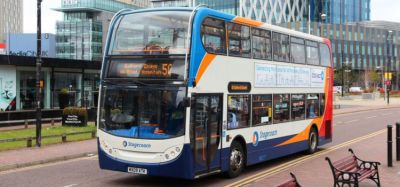Connecting the London Underground
- Like
- Digg
- Del
- Tumblr
- VKontakte
- Buffer
- Love This
- Odnoklassniki
- Meneame
- Blogger
- Amazon
- Yahoo Mail
- Gmail
- AOL
- Newsvine
- HackerNews
- Evernote
- MySpace
- Mail.ru
- Viadeo
- Line
- Comments
- Yummly
- SMS
- Viber
- Telegram
- Subscribe
- Skype
- Facebook Messenger
- Kakao
- LiveJournal
- Yammer
- Edgar
- Fintel
- Mix
- Instapaper
- Copy Link
Posted: 22 August 2013 | Gareth Bacon, London-Wide Assembly Member, Greater London Authority Conservatives | No comments yet
The London Underground facilitates no voice or SMS communications and recent steps to add Wi-Fi to 120 of the 260 stations is by no means competitive with cities such as Paris and Berlin who have had mobile phone technology since the late-1990s. The Tube needs to play a serious game of catch-up to provide what is becoming a standard in the commuter transport industry. The technology is now almost cost neutral and can provide added value to a system in terms of traffic management, safety, and alternative revenue sources.
The current experience
The prevalence of communications technology is quite impressive, to the point that while travelling on most of the world’s metropolitan transport systems it is commonplace to be connected even when you’re hundreds of feet underground. Metropolitan transport operators are no longer exceeding expectations when connecting passengers underground – they are meeting them.
The London Underground facilitates no voice or SMS communications and recent steps to add Wi-Fi to 120 of the 260 stations is by no means competitive with cities such as Paris and Berlin who have had mobile phone technology since the late-1990s. The Tube needs to play a serious game of catch-up to provide what is becoming a standard in the commuter transport industry. The technology is now almost cost neutral and can provide added value to a system in terms of traffic management, safety, and alternative revenue sources. The current experience The prevalence of communications technology is quite impressive, to the point that while travelling on most of the world’s metropolitan transport systems it is commonplace to be connected even when you’re hundreds of feet underground. Metropolitan transport operators are no longer exceeding expectations when connecting passengers underground – they are meeting them.
The London Underground facilitates no voice or SMS communications and recent steps to add Wi-Fi to 120 of the 260 stations is by no means competitive with cities such as Paris and Berlin who have had mobile phone technology since the late-1990s. The Tube needs to play a serious game of catch-up to provide what is becoming a standard in the commuter transport industry. The technology is now almost cost neutral and can provide added value to a system in terms of traffic management, safety, and alternative revenue sources.
The current experience
The prevalence of communications technology is quite impressive, to the point that while travelling on most of the world’s metropolitan transport systems it is commonplace to be connected even when you’re hundreds of feet underground. Metropolitan transport operators are no longer exceeding expectations when connecting passengers underground – they are meeting them.
Related topics
5G & Transport Communications, Business Models, Fleet Management & Maintenance, Multimodality, Passenger Experience, Ticketing & Payments, Transport Governance & Policy
Issue
Issue 4 2013
Related cities
London
Related organisations
London Underground
Related people
Gareth Bacon








